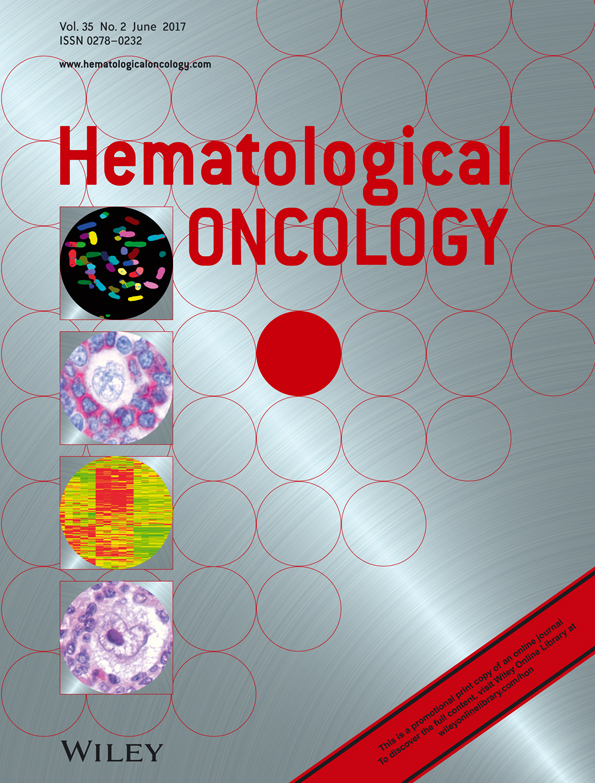Long-term safety and activity of cladribine in patients with extranodal B-cell marginal zone lymphoma of the mucosa-associated lymphoid tissue (MALT) lymphoma
Abstract
The purine analogue 2-chloro-deoxyadenosine (2-CDA, cladribine) +/− rituximab has been successfully tested in mucosa-associated lymphoid tissue lymphoma (MALT lymphoma) patients. However, studies using cladribine in other indications have reported the potential for prolonged hematological side effects and secondary hematologic and non-hematologic malignancies. To date, there have been no data on long-term effects of cladribine in MALT lymphoma patients. We have analyzed a large number of 49 patients treated with cladribine at our institution 1997–2011. All patients were treated within clinical trials and had undergone a standardized follow-up protocol minimizing a potential bias in the detection of late sequels and relapses. After a median follow-up time of 61 months (interquartile range: 43–72) for 49 analyzed patients, 35 (71%) are alive, while 14 (29%) have died. In the entire collective, three cases (6%) of prolonged pancytopenia including manifest myelodysplastic syndrome in one patient (2%), three cases (6%) of secondary lymphoid malignancies, and five cases (10%) of non-hematologic cancers were documented. In terms of outcome, 42/49 (86%) patients responded to cladribine-containing treatment, and only 10/42 (24%) responding patients needed further treatment after a median time to progression of 14 months (interquartile range, 8–34). Currently, 25/35 (71%) patients being alive are in ongoing complete remission and 2/35 (6%) in ongoing stable disease, respectively. Eight patients (23%) are free of lymphoma after second-line therapy, with the median overall survival not having been reached. Our data suggest that cladribine might be safely applied in patients with MALT lymphoma, also in terms of long-term toxicities. These data also confirm the potential of cladribine to induce durable remissions. Copyright © 2015 John Wiley & Sons, Ltd.




